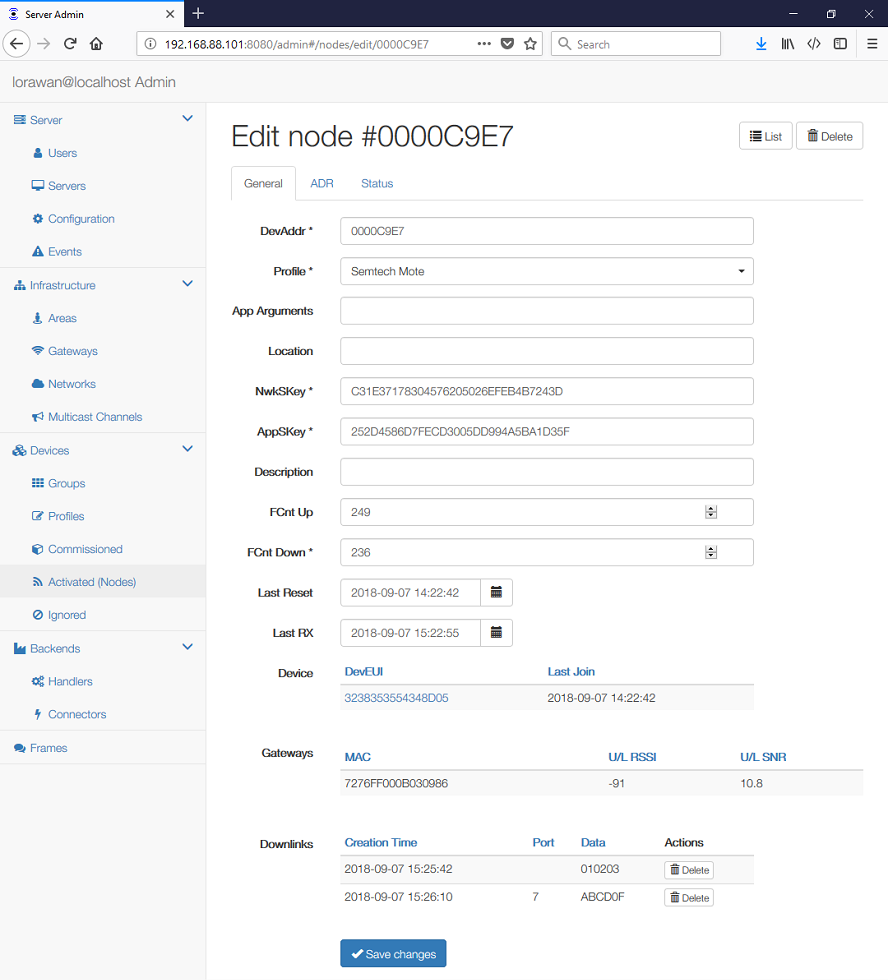This list contains active network nodes that either have already joined the network using the over-the-air activation (OTAA) or have been activated-by-personalization (ABP). All devices that can join the network using OTAA are listed on the Devices list.
For each active network Node you can set:
- DevAddr of the node
- Region that determines the LoRaWAN regional parameters
- Application identifier corresponding to one of the Applications configured.
- Group denotes application-specific device group or behaviour.
- Arguments, which is an opaque string with application-specific settings.
- NwkSKey and AppSKey
- FCnt Check to be used for this device (see the Devices section for more explanation).
- TX Window to be used for downlinks to this device.
The US 902-928MHz region allows a Private Hybrid mode introduced by Multitech. This is useful when you want to split the radio spectrum to 8 different sub-bands, but it requires custom device firmware.
The Downlinks table contains frames created by the application, which are scheduled for transmission. Class A devices listen for downlinks only for 2 seconds after an uplink transmission, so it may take a while until all messages are transmitted. Class C downlinks are not listed there as these are scheduled immediately.
To clone an existing node, simply save it under a different DevAddr.
Optionally, you can also set the ADR parameters. The server will attempt to configure the device accordingly.
Below the configuration options you can monitor the performance of the node. You can see the assumed ADR parameters and two graphs that display the last 50 received frames.
Note that the (Google) graphs will not be displayed when the Internet connectivity is not available, e.g. in an isolated network.
Shows:
- Alerts that may need your attention:
battery_lowwhen the device battery is below 20% its capacity;downlink_noisewhen the indicated D/L SNR is close to the sensitivity limit;many_resetswhen the device sent multiple Join requests without sending any other frames.
- Request Status flag, which can be used to disable the status requests for simple devices that do not support it (by default true);
- Status Time and Status FCnt indicating when was the status last received by the server;
- Device Status graph that shows the recent device Battery level (0-255) and the Signal-to-Noise-Ratio of received downlinks (D/L SNR).
The server requests the device status upon join or reset and then at given
time/fcnt intervals defined by the devstat_gap parameter. By default
{devstat_gap, {432000, 96}}, which requests the status every 5 days or
every 96 frames (whatever occurs first).
The server also requests device status when the ADR parameters change.
